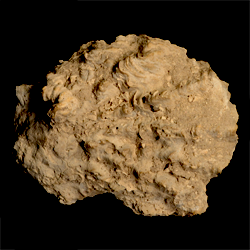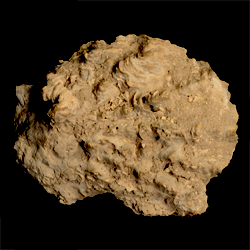
Gryphaeidae

- Phylum: Mollusca
- Class: Bivalvia
- Order: Ostreida
- Family: Gryphaeidae
Overview
Common name: Foam oysters or honeycomb oysters.
Key morphological features: The Gryphaeidae are medium to large in size, up to 300 mm. The shells are usually inequivalve and thin-walled or solid, with a circular or oval shape, and do not gape. The shell is composed of aragonite and calcite, and exterior sculpture is radially undulate or ribbed, often with scales or spines. Valve interiors are non-nacreous. The pallial line is unbroken, but difficult to see, and the shell margin contains an interlocking complex of ridges and tubercles. Species of Gryphaeidae are monomyarian, with no anterior adductor muscle. The edentate hinge has no teeth. Source: Mikkelsen, P.M., and Bieler, R. 2008. Seashells of Southern Florida: Bivalves. Princeton, New Jersey: Princeton University Press. 503 pp.
Geological range: Triassic to Recent (Mikkelsen & Bieler, 2008).
Geographic distribution: A distributional map for modern Gryphaeidae may be accessed from OBIS. A distributional map for ancient Gryphaeidae may be accessed from the Paleobiology Database.
Diversity: There are 10 recognized living species of Gryphaeidae and 4 genera (WoRMS database, unvetted). The Paleobiology Database recognizes 29 fossil genera and 144 fossil species of Gryphaeidae (unvetted).
Paleoecology: The Gryphaeidae are marine or estuarine suspension feeders that cement themselve to hard substrates. Their exterior surfaces are often encrusted or bored by other species. They are found in tropical and subtropical seas. Source: Mikkelsen and Bieler (2008).
Phylogenetic status: Unknown.
